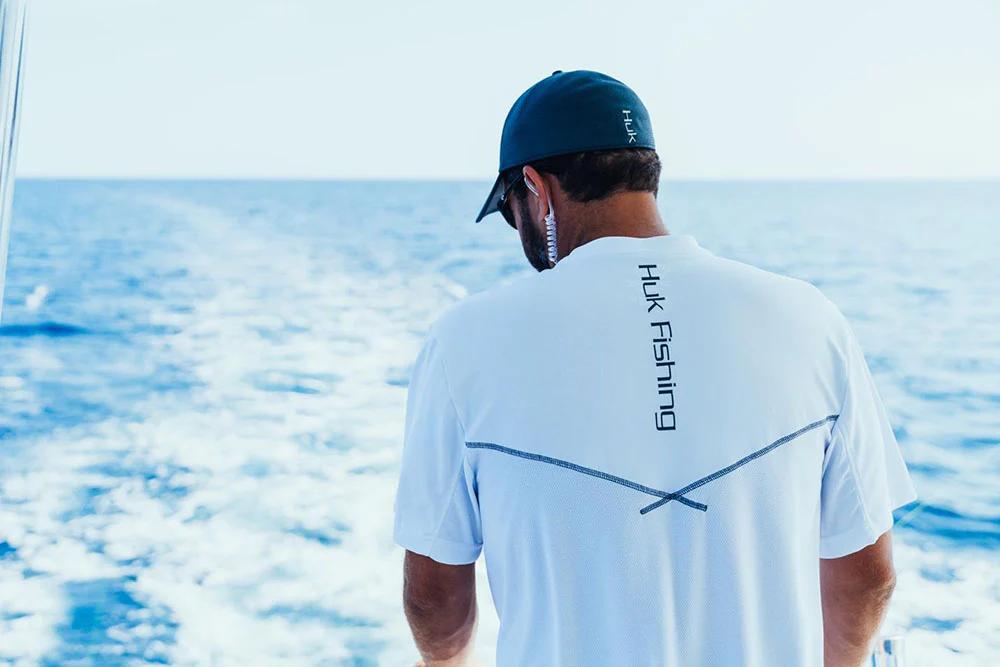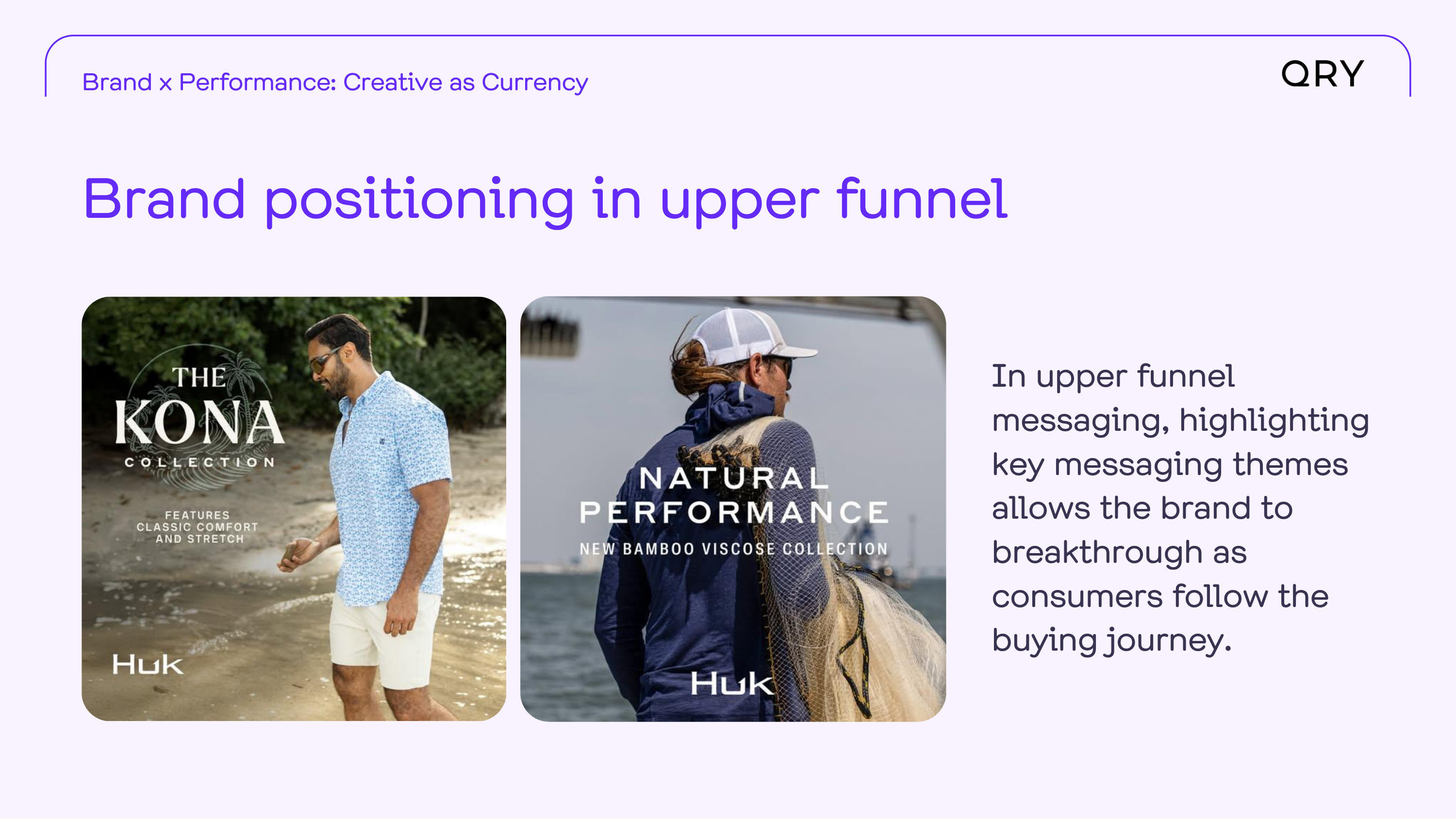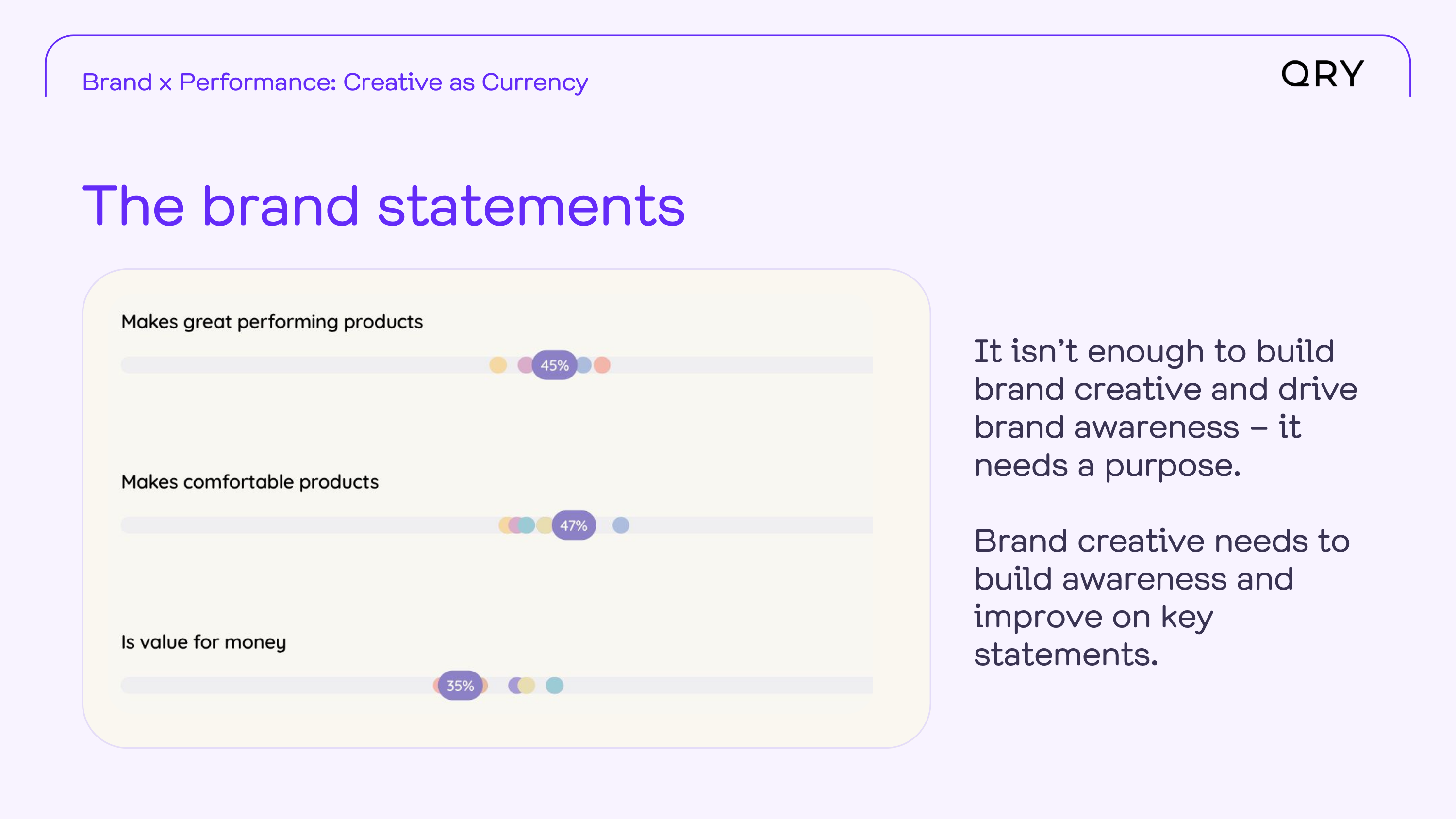Top strategic media agency QRY on how to build a brand that performs

- A common mistake people make is treating creative in isolation. You’ve got one social ad, you test a million versions of it, and hope something sticks. You need to look at the full funnel.
- Commercial KPIs are obvious — are you making money? But brand KPIs are just as important, and often a precursor to commercial success. You should be measuring the soft signals too.
- Consistency is key – make sure that every piece of creative looks like they’re part of the same story.
This conversation has been edited down for clarity. If you want to see the full webinar, Creative as Currency: Inside Two Agencies' Brand x Performance Playbooks, you can do that here.
What we do at QRY, opens in new tab is full-funnel media buying: everything from linear TV and out-of-home to paid search and paid social. But for the purposes of this conversation, it's important to understand where we sit: we don’t do creative ourselves.
But creative is the single most important lever in marketing today. So the question becomes: how do we make an impact?
Our unique value lies in our vantage point. We help clients understand what data they need and how to use it to develop creative assets that drive performance and build brand awareness. Brand awareness matters because it influences every campaign we run.
Sitting at the intersection of brand and performance
We often find ourselves bridging the gap between brand teams and performance marketers. That’s where we thrive: helping brands run brand campaigns that actually drive results. The secret is ensuring there’s a shared language between teams. One of the tools we use to build that shared language is Tracksuit.
When we’re aligned, we can scale brands and drive profitable growth. Creative becomes central to that process. It builds awareness, drives action, and supports both brand and performance goals.
Creative that supports the full funnel
A common mistake we see is thinking of creative in isolation. You’ve got one social ad, you test a million versions of it, and hope something sticks. That’s not our approach.
Instead, we look at the full funnel — from awareness and consideration, through investigation, usage, and preference — and ask: how are we showing up at each stage?
- At the top: Are we exciting consumers and building awareness?
- In the consideration set: Are we standing out against the competition?
- In the investigation phase: Are we providing the right information — specs, benefits, features?
We build creative for each stage, not with identical language, but with consistent brand elements — visuals, tone, colors. It all needs to hang together. Think of it like a puzzle: every piece matters, and consistency is what brings it to life.
The KPIs that matter
When done right, you impact two key categories of KPIs: Brand KPIs and Commercial KPIs.
Commercial KPIs are obvious — are we making money? But brand KPIs are just as important, and often a precursor to commercial success. Here’s what we look for:
- Brand engagement: Are people engaging with the brand itself (not just the creative)?
- Social metrics: Follower growth, engagement, comments, shares.
- Social listening: Are people talking about your brand more?
- Organic search lift: One simple trick — look at your impression share on brand search. The inverse shows organic interest.
- Post-purchase surveys: Where are people discovering your brand? Podcasts often show up here.
- Tracksuit tracking: Tracksuit helps us measure brand awareness and diagnose funnel drop-offs. For instance, if awareness is up but consideration isn’t, the problem lies in the middle — and that tells us exactly what to fix.
Why brand investment matters more than ever
We all know the pain of rising acquisition costs and skyrocketing CPMs. So, how do we combat this?
Yes, creative is king. But media strategy still matters — especially when we focus on diversity and efficiency.
We’re investing in Spotify, podcast audio, linear and connected TV. These channels are often more cost-effective for building awareness — which in turn makes performance channels more efficient.
Performance marketing is just a math problem: CPM × CTR × Conversion Rate = Revenue.
When CPMs rise, the only way to win is by improving click-through and conversion rates. That’s where brand awareness comes in. People click and convert more when they already know and like your brand.
Being known and preferred before someone enters the consideration set gives you a huge edge.
Brand as a competitive moat
Brand positioning is a moat. It helps you stand out in performance marketing and win in the consideration phase. Take Huk, one of our clients in the fishing apparel space. They wanted to be known for quality, comfort, and natural performance.

We worked with their team to infuse these messages into their upper funnel — not to drive immediate conversion, but to prime the audience. Once people entered the consideration stage, we followed up with lower-funnel creative that spoke to features and benefits — especially effective for male shoppers.
It’s all about sequencing. First, sell the brand. Then, sell the product.
Using brand statements to shape creative strategy
General brand awareness is a great start, but we want to go deeper: what does the brand stand for? That’s where Tracksuit's brand statements come in.

We help clients identify and track statements they want to win on — comfort, quality, value for money. Then we measure how they're performing compared to competitors. That is what helps our performance creative hit harder.
For example, one of our clients goes on sale frequently. When they do, their "value for money" metrics spike — and so do conversions. We use this data to guide long-term improvement strategies.
Tools we use to support brand consistency
To help clients stay consistent, we use a few tools:
1. The Brand Image Deck
We gather all top-performing ad images into one deck. Creative teams can place new concepts alongside proven visuals and ask: does this feel aligned or out of place?
2. The Wall Test
Print every piece of creative — digital, social, direct mail — and put it on a wall. Does it look like the same brand? Take it a step further and do the same for your competitors. Are you standing out or blending in?
3. The "Outsized Shadow" Principle
A creative agency we work with coined this term. The more consistent your brand is, the bigger the shadow that each ad creative makes.
The real strategy: time, process, consistency
Branded performance isn’t a growth hack. It’s not about flashy tactics or overnight results. The strategy is time, process, and consistency. Doing the right things, repeatedly, over a long period.
That’s how you build a brand that performs.
